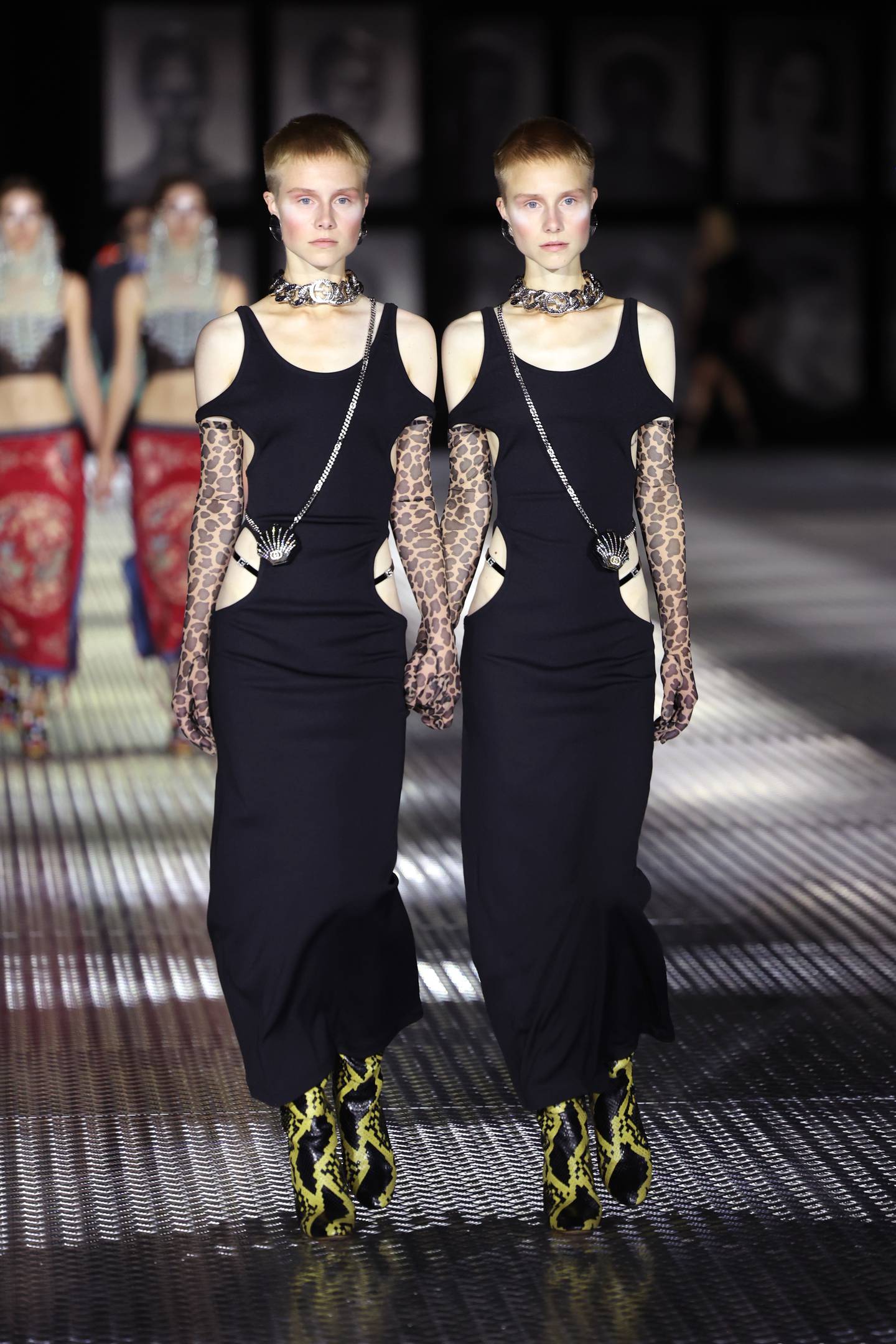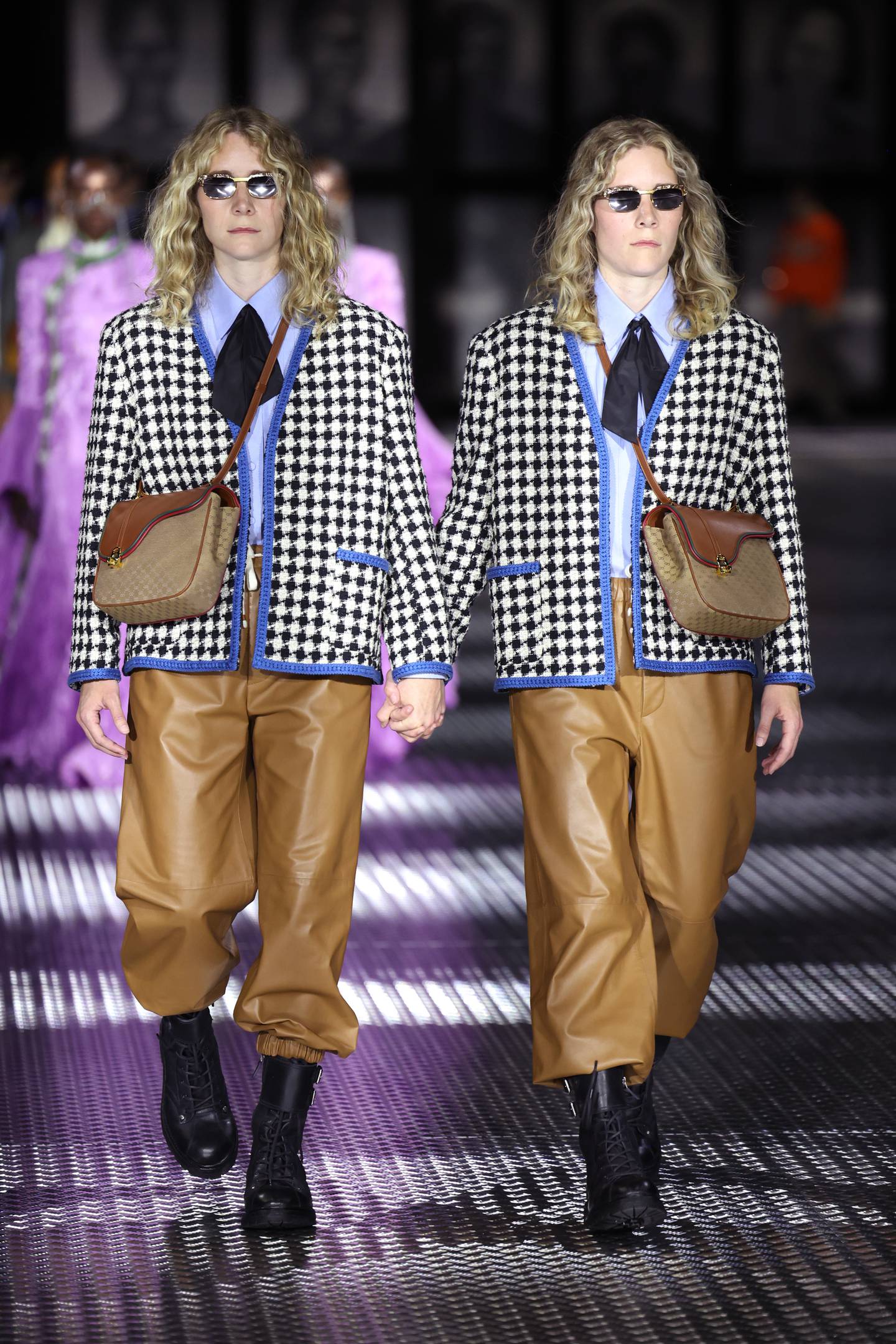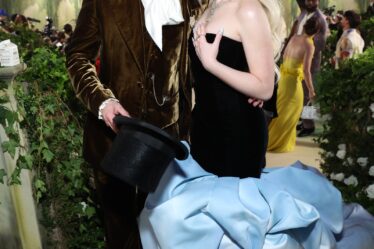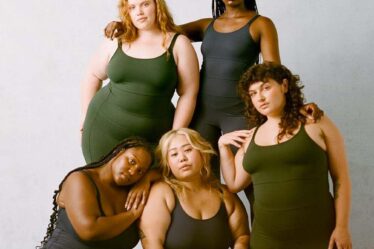
A few weeks ago, the New York Times published a story on doppelgängers, people unrelated by birth who share the genetic similarities of identical twins. Stop and think about that destabilising idea for a moment, how it challenges your faith in your own uniqueness as a human being. Somewhere, you have a twin. Maybe they are in Twinsburg, the place that Alessandro Michele offered up as the locale for Gucci’s Spring 2023 show on Friday. It’s a real place (in Ohio, if you’re looking) but for Michele, it was also a state of mind, an embodiment of otherness. His mother was an identical twin. Her sister lived with the Michele family. Same voice, same dress, same hair: little Ale wasn’t always sure who he was talking to. His aunt was more confident, to the point that she would go on job interviews for her sister.
It’s a fabulous conceit on which to base a horror movie (dozens have). No one has ever attempted to build a fashion show around the idea. No wonder. It was a challenge, technically and emotionally. For Michele, there was clearly a deep personal resonance, not only his family background (and remember that his hometown of Rome was founded by the twins Romulus and Remus), but also the six years of therapy, three sessions a week, that have connected him with “the Other you meet when you dig deep inside.” And beyond that, there was an acknowledgement of all the marginal groups – the queer community, the immigrants, the idealists and activists – who are likely to be othered under the far-right government that new prime minister Giorgia Meloni will install after her likely electoral victory next week. “Personal, but also universal,” as Michele so aptly described it. Several looks bannered FUORI! FUORI!, which, in Italian, means “out” but also is the acronym for Fronte Unitario Omosessuale Rivoluzionario Italiano (Revolutionary Homosexual Unitary Front), the group that fought for LGBTQ rights throughout the ‘70s and ‘80s in Italy.
In fashion terms, Michele’s collection embraced the grab bag of high and low elements, the mesh of elegance and arcana, that is now sealed as his signature. The archive that Michele has created in his ten years as Gucci’s creative director is surely enough to nourish any creative tributary that trickles through his brainpan. The love of old Hollywood that translates into gala gowns with flowing trains, the exuberant glam rock campiness, the dressed-up streetwear were intertwined through this show with no particular sense of drama or climax. It was all just the river of life as Michele sees it, and it was familiar enough that the sense of surprise its profligacy once generated has significantly paled.
But if you were in search of a subtext, it was surely the 1980s. Aside from FUORI!, there were tiger-striped stirrup pants paired with a New Wave bomber, Memphis-styled prints of wrenches and bolts, broad-shouldered Numanoid jumpsuits that sparked memories of Parachute, erstwhile temple of New Wave style. But there were also timeless strands of sumptuous Chinoiserie, and plenty of the sharp jetset tailoring that once seduced Italy’s borghesia. If fashion is fundamentally about duality — the tension between who you are and how you present yourself — Michele’s collection was a sterling exercise in roleplaying. Another 80s quote –— his one from 1984′s smash hit film “Gremlins” took it to extremes.

The adorable little “mogwai” from that film were turned into evil fiends by human carelessness. Michele turned them into shoes and bags. You could scarcely wish for a more cartoon-graphic illustration of the duality that entrances him in his life and work. Their unexpected presence also highlighted his ongoing challenge: how best to re-ignite the gleeful unpredictability that has fired Michele’s Gucci. He’s fortunate in that he can fall back on his innate showmanship. The audience on Friday saw the standard procession of models parading in front of a wall of black and white portraits, the same faces duplicated two and three times. But then, as the show came to the end, the wall lifted and there was a whole other audience mirroring us. They too had been watching the same procession of models, who now re-emerged as 68 sets of identical twins, holding hands. To see them so connected was strangely moving. Was it because twins are one of the human species’ most fascinating mysteries? And do they represent the kind of emotional, umbilical succour so many lost souls crave? Michele said he cried, even though tears don’t come easily to him. He wasn’t the only one. In such strange, dislocated times, it felt good to feel.



